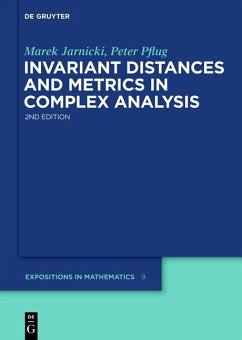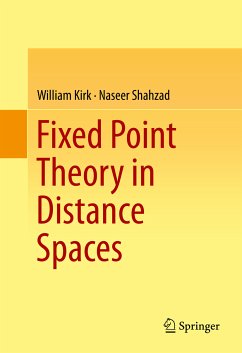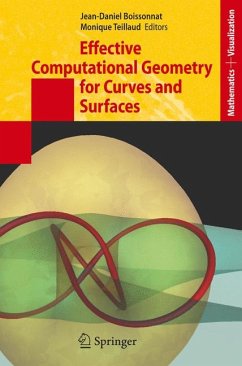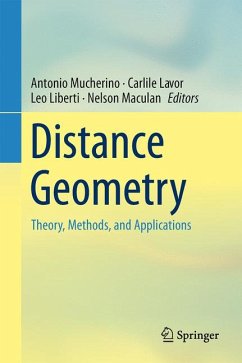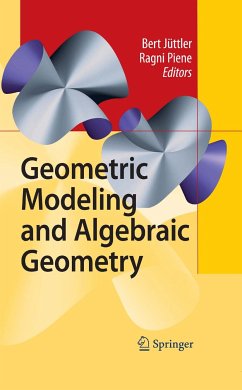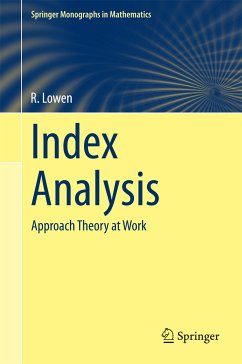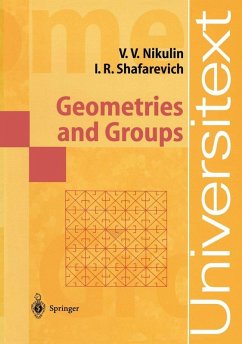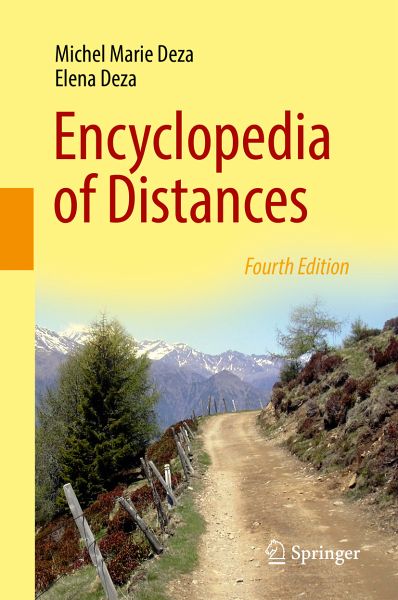
Encyclopedia of Distances (eBook, PDF)
Versandkostenfrei!
Sofort per Download lieferbar
176,95 €
inkl. MwSt.
Weitere Ausgaben:

PAYBACK Punkte
88 °P sammeln!
This 4-th edition of the leading reference volume on distance metrics is characterized by updated and rewritten sections on some items suggested by experts and readers, as well a general streamlining of content and the addition of essential new topics. Though the structure remains unchanged, the new edition also explores recent advances in the use of distances and metrics for e.g. generalized distances, probability theory, graph theory, coding theory, data analysis.New topics in the purely mathematical sections include e.g. the Vitanyi multiset-metric, algebraic point-conic distance, triangula...
This 4-th edition of the leading reference volume on distance metrics is characterized by updated and rewritten sections on some items suggested by experts and readers, as well a general streamlining of content and the addition of essential new topics. Though the structure remains unchanged, the new edition also explores recent advances in the use of distances and metrics for e.g. generalized distances, probability theory, graph theory, coding theory, data analysis.
New topics in the purely mathematical sections include e.g. the Vitanyi multiset-metric, algebraic point-conic distance, triangular ratio metric, Rossi-Hamming metric, Taneja distance, spectral semimetric between graphs, channel metrization, and Maryland bridge distance. The multidisciplinary sections have also been supplemented with new topics, including: dynamic time wrapping distance, memory distance, allometry, atmospheric depth, elliptic orbit distance, VLBI distance measurements, the astronomical system of units, and walkability distance.
Leaving aside the practical questions that arise during the selection of a 'good' distance function, this work focuses on providing the research community with an invaluable comprehensive listing of the main available distances.
As well as providing standalone introductions and definitions, the encyclopedia facilitates swift cross-referencing with easily navigable bold-faced textual links to core entries. In addition to distances themselves, the authors have collated numerous fascinating curiosities in their Who's Who of metrics, including distance-related notions and paradigms that enable applied mathematicians in other sectors to deploy research tools that non-specialists justly view as arcane. In expanding access to these techniques, and in many cases enriching the context of distances themselves, this peerless volume is certain to stimulate fresh research.
New topics in the purely mathematical sections include e.g. the Vitanyi multiset-metric, algebraic point-conic distance, triangular ratio metric, Rossi-Hamming metric, Taneja distance, spectral semimetric between graphs, channel metrization, and Maryland bridge distance. The multidisciplinary sections have also been supplemented with new topics, including: dynamic time wrapping distance, memory distance, allometry, atmospheric depth, elliptic orbit distance, VLBI distance measurements, the astronomical system of units, and walkability distance.
Leaving aside the practical questions that arise during the selection of a 'good' distance function, this work focuses on providing the research community with an invaluable comprehensive listing of the main available distances.
As well as providing standalone introductions and definitions, the encyclopedia facilitates swift cross-referencing with easily navigable bold-faced textual links to core entries. In addition to distances themselves, the authors have collated numerous fascinating curiosities in their Who's Who of metrics, including distance-related notions and paradigms that enable applied mathematicians in other sectors to deploy research tools that non-specialists justly view as arcane. In expanding access to these techniques, and in many cases enriching the context of distances themselves, this peerless volume is certain to stimulate fresh research.
Dieser Download kann aus rechtlichen Gründen nur mit Rechnungsadresse in A, B, BG, CY, CZ, D, DK, EW, E, FIN, F, GR, HR, H, IRL, I, LT, L, LR, M, NL, PL, P, R, S, SLO, SK ausgeliefert werden.





